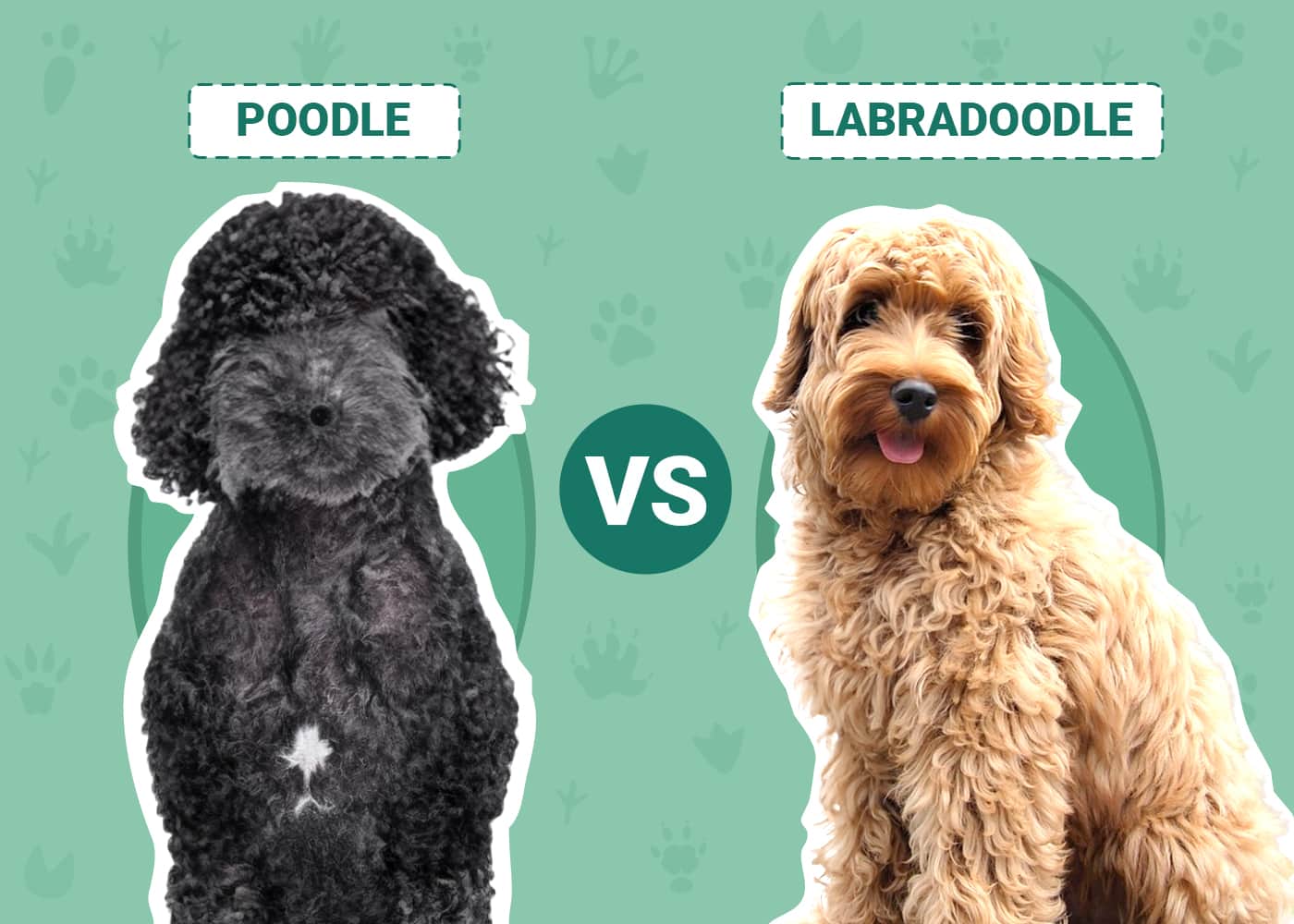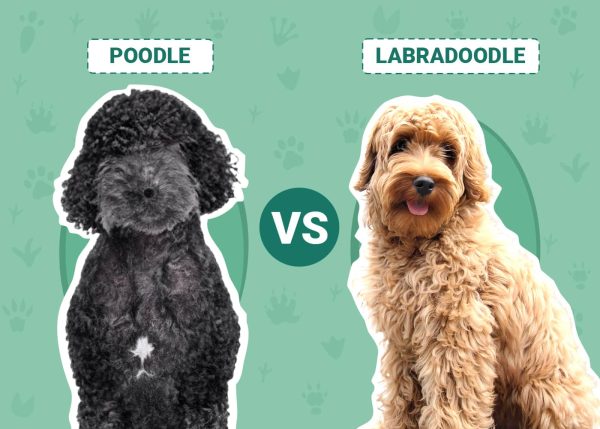Click to Skip Ahead
Poodles and Labradoodles are adorable, fluffy, teddy bear-like dogs. They are both intelligent, easy to train, and great with kids. They also tend to make friends wherever they go. That said, there are a few specific traits that set these dogs apart. Is one of these breeds the right choice for you? In this article, we explore the key differences between Labradoodles and Poodles to help you decide which dog might be best for you and your family, so keep reading to learn more!

Visual Differences

At a Glance
- Average height (adult): 15–22 inches
- Average weight (adult): 45–70 pounds
- Lifespan: 10–13 years
- Exercise: 1+ hour a day
- Grooming needs: High
- Family-friendly: Yes
- Other pet-friendly: Often
- Trainability: Highly trainable
- Average height (adult): 21–24 inches
- Average weight (adult): 50–65 pounds
- Lifespan: 12–16 years
- Exercise: 1+ hour a day
- Grooming needs: High
- Family-friendly: Yes
- Other pet-friendly: Often
- Trainability: Highly trainable

Poodle Overview
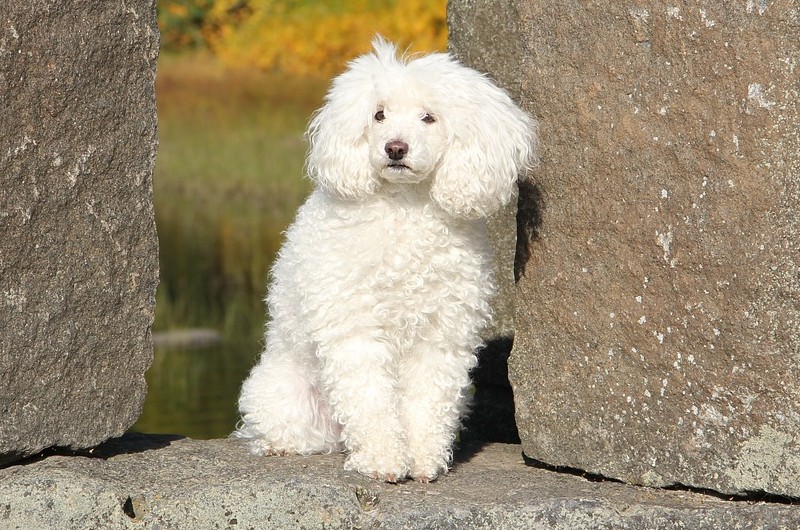
The Poodle is an old breed, with their exact origins unknown. Some cynologists believe that they originated in France as early as the 17th century and were originally bred to be water retrievers (their job was to bring waterfowl back to hunters). However, since the name of the breed comes from the German word pudel (which means “to splash in water”), other cynologists believe that the Poodle originated in Germany instead.
Regardless of their exact origins, these pups are still popular around the world today, mainly due to their coats being considered “hypoallergenic.” While no breed of dog is truly hypoallergenic, it is true that Poodles shed less than other breeds due to their long, curly coats. They are also intelligent dogs, though they can get bored easily and are known to be extremely energetic. They make excellent family dogs for active families, as they need plenty of exercise and stimulation to avoid boredom. If you don’t have time to take daily walks and play with your Poodle, they can become destructive. Moreover, as Poodles are known to be great swimmers, they make ideal companions during trips to the beach or lake!
Temperament
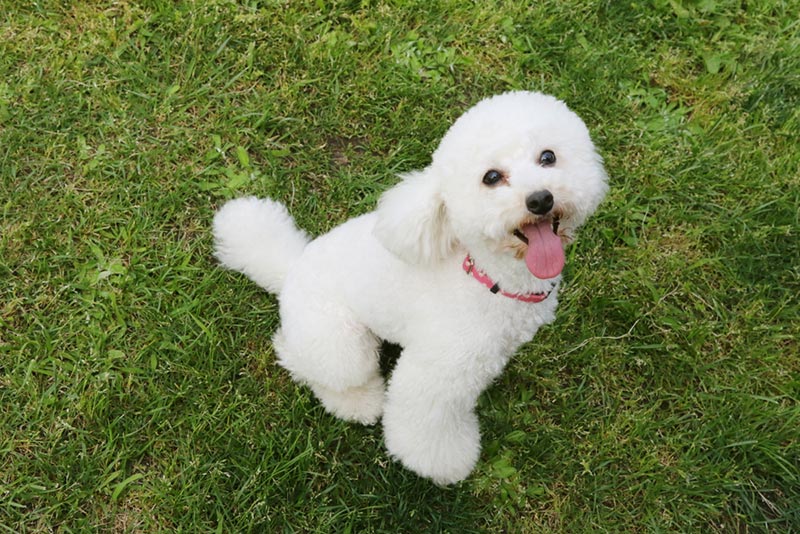
Poodles possess strong attributes that make them especially great for homes with young children. In addition to being loyal, alert, energetic, and playful, Poodles show great patience with toddlers. These dogs bond deeply with their family members, love to learn new tricks, and have above-average intelligence. These qualities make dog training sessions particularly enjoyable.
Exercise
Poodles are bright, athletic animals and require at least 1 hour of daily exercise and play to burn off their energy. Whether it’s a fetch game, a long walk in the park, or an impromptu swim session at the lake, any form of exercise works for Poodles. But don’t underestimate their need for exercise. Without the regular release of pent-up energy, Poodles can become frustrated and engage in destructive behavior.
Training

Due to their high intelligence and desire to please, Poodles are natural and quick learners. They are eager to be taught new tricks and love spending time with their humans, which makes training much easier. That said, they can get bored quickly, so be sure to make the training process challenging and engaging (by using playful dog training toys, for example).
Health
Standard Poodles have a life expectancy of 10 to 13 years, while miniature Poodles can live up to 15 years. However, they can suffer from serious diseases, including gastric torsion, epilepsy, progressive retinal atrophy, thyroid problems, Addison’s disease, sebaceous adenitis, and hip dysplasia. These conditions can be identified by a veterinarian with DNA testing, skin biopsies, and eye and hip tests.
Although genetic diseases are beyond your control, you can help your dog live the healthiest life possible by providing them with a high-quality diet and plenty of exercise.
Diet
It is best to divide the daily portion of dry kibble into two meals, to reduce the risk of bloat for Poodles. In addition, these dogs are known to have sensitive stomachs, so a high-quality diet adapted to their specific needs is essential.
Grooming
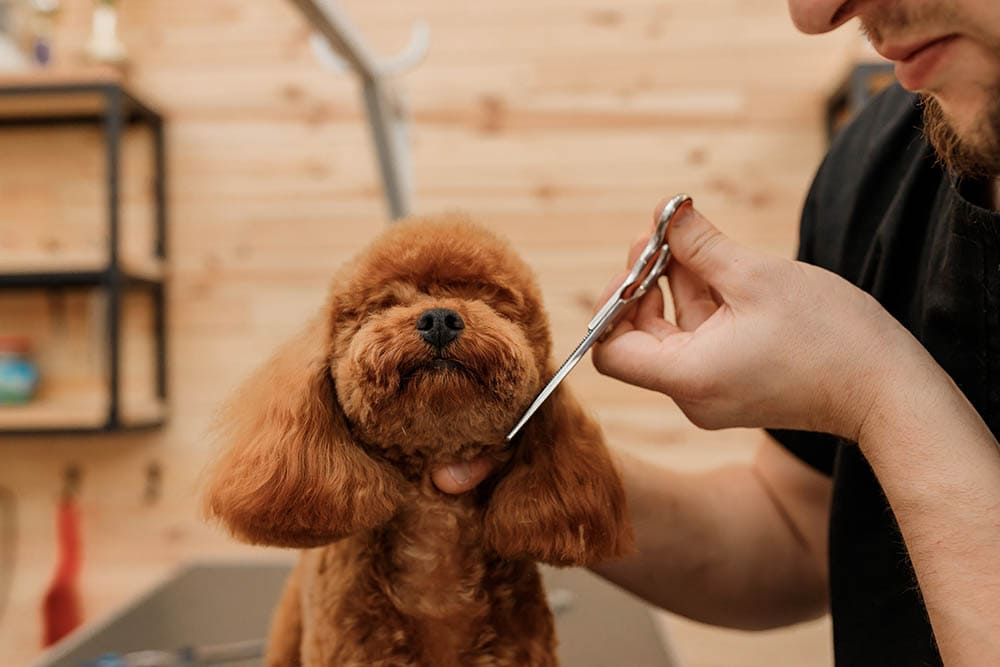
Poodles are well known for their distinguished looks. Therefore, daily brushing is necessary to keep their coat silky and knot free. Ideally, you should go to a professional dog groomer at least once a month to keep your Poodle looking sleek.
Suitable For:
Due to their playful temperament, high energy levels, ease of training, and great tolerance and patience with children, Poodles make excellent companions for active families. They can also adapt to apartment living, provided that they can burn off their energy for at least an hour a day.
Labradoodle Overview
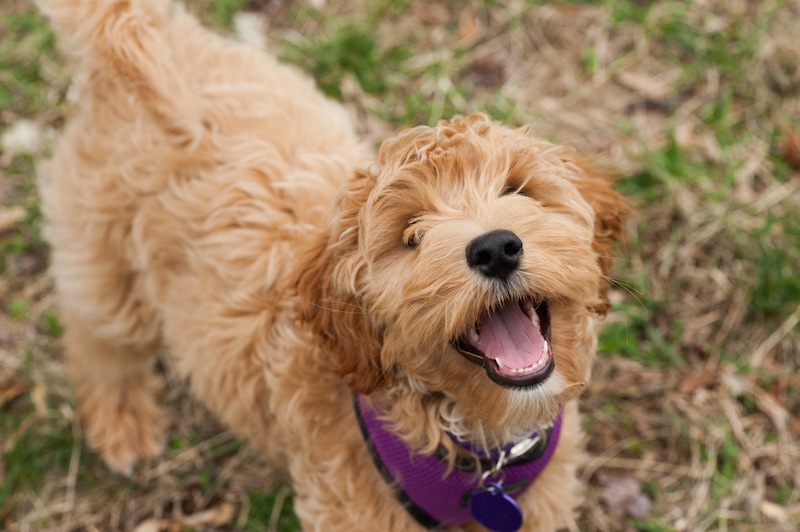
A Labradoodle is the offspring of a Labrador and a Poodle. These affectionate and friendly puppies have a much shorter history than Poodles, with their origins dating back to the late 20th century. In 1988, Australian breeder Wally Conron crossed the Labrador Retriever and the Standard Poodle, hoping to create a guide dog for the blind that would also be suitable for those allergic to dog hair and dander. The crossing of these two breeds produced an endearing, energetic, loyal, and intelligent dog. But despite all their fine qualities, Labradoodles are still not recognized as a breed by the major kennel club associations in North America. This is not a problem if you do not intend to participate in dog shows and competitions, though.
Temperament
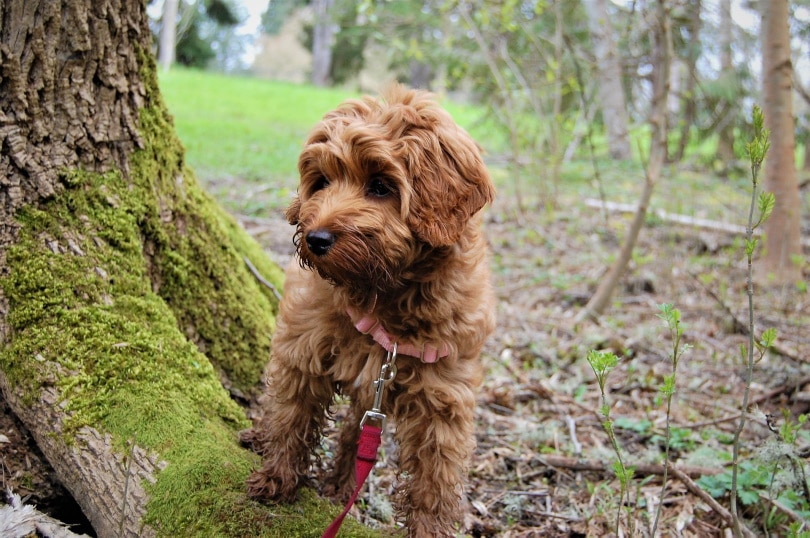
Labradoodles have the same qualities as Poodles, including high intelligence, devotion and affection toward their family, patience with children, ease of training, and high energy levels. Much like Labradors, Labradoodles sometimes exhibit a youthful exuberance that can seem overwhelming at times, but enough daily exercise and playtime will keep them calm, happy, and balanced.
Exercise
Labradoodles are energetic and highly intelligent dogs, hence the need for them to get at least 1 hour of physical activity daily. These periods can consist of physical and mental activities, such as playing hide-and-seek, swimming, running in the dog park, solving dog puzzles, and doing other brain games. They can live in an apartment, but the ideal situation for them is a fenced backyard that will enable them to roam as they please.
Training

Labradoodles are highly trainable. Their social nature and intelligence make them eager to learn, respond to commands, and spend quality time with their owners. However, their intelligence can sometimes lead to stubbornness and boredom, hence the importance of making their training challenging and fun. It’s also important to start their education early, so your energetic puppy acquires and maintains good habits. Moreover, although Labradoodles have pleasant temperaments and get along with both humans and dogs, they should start socialization at a young age. Contact with other dogs and pets when young is crucial for developing their social skills.
Health
Labradoodles generally enjoy good health, but they can suffer from the same health issues as their parents, including hip dysplasia, Addison’s disease, epilepsy, and eye disorders such as progressive retinal atrophy.
That said, you can help keep your Labradoodle healthy by maintaining an active lifestyle and visiting the vet for regular checkups.
Diet
Labradoodles can be greedy, so it’s preferable to split their daily ration into two or three meals. Also, be careful not to feed them too many treats, to prevent the risk of obesity. Overall, the diet of Labradoodles must be adapted to their size, age, and level of physical activity. Premium-type kibbles are recommended for the quality of the proteins and other nutrients that they provide.
Grooming
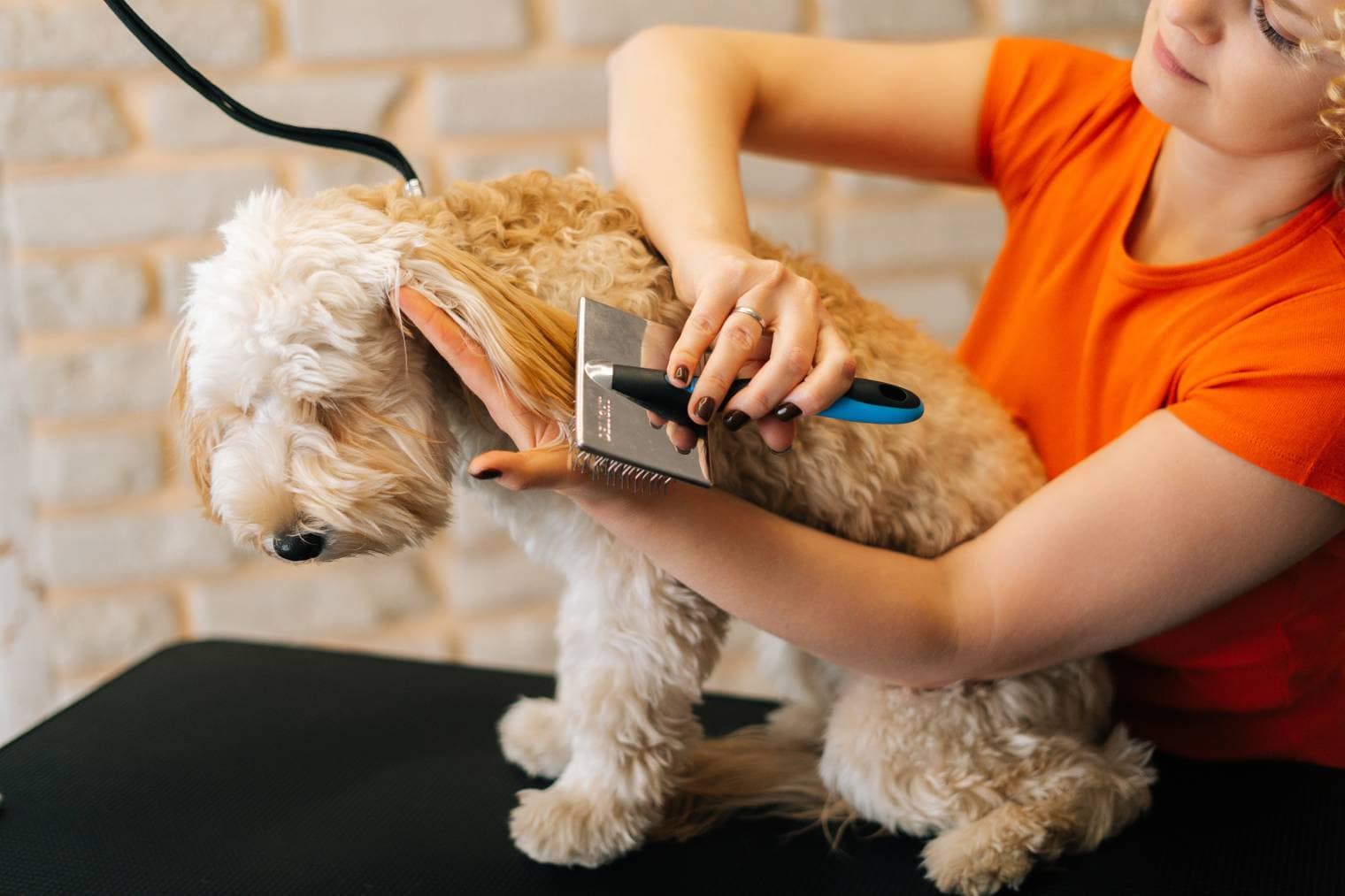
Caring for the Labradoodle’s coat isn’t particularly complex. These dogs don’t shed much and require simple basic care, such as weekly brushing, occasional baths, tooth brushing, ear cleaning, and regular nail trimming. However, smooth-coated Labradoodles do tend to shed more and require a bit more maintenance. In some cases, a visit to the groomer once every 2 months may be necessary.
Suitable For:
Labradoodles are versatile and adapt well to all kinds of environments. They are suitable for novice dog owners due to their ease of training; they will also thrive in an active family. They will protect children and be gentle and affectionate toward them. Moreover, Labradoodles can even be used as therapy or assistance dogs when given proper training.
Which Breed Is Right for You?
Both breeds are extremely friendly, energetic, and intelligent, but Labradoodles tend to be more laidback than Poodles. Indeed, Poodles are known to be high-strung, though that depends on each individual dog’s personality. Both breeds are easy to train, but Labradoodles are often better for new dog owners. Either way, both breeds thrive on plenty of exercise, love being around their humans, and generally get along well with other household pets. Finally, both Poodles and Labradoodles can be used as therapy dogs and are ideal for active families with young children.
However, since Poodles are purebred dogs, they are generally more expensive and can suffer from genetic conditions and other breed-specific health issues. As a hybrid breed, Labradoodles can inherit health issues from both their parents, but these dogs are generally quite hardy and healthy.
Ultimately, either of these fluffy pups would make a fantastic companion. By carefully assessing the similarities and differences of each breed, you can choose the best dog for you and your family!
See Also:
- How Much Do Labradoodles Cost? Price Guide
- Australian Labradoodle vs Goldendoodle: The Differences (with Pictures)
Featured Image Credit: Top – chili71, Pixabay | Bottom – William Rudolph, Unsplash

